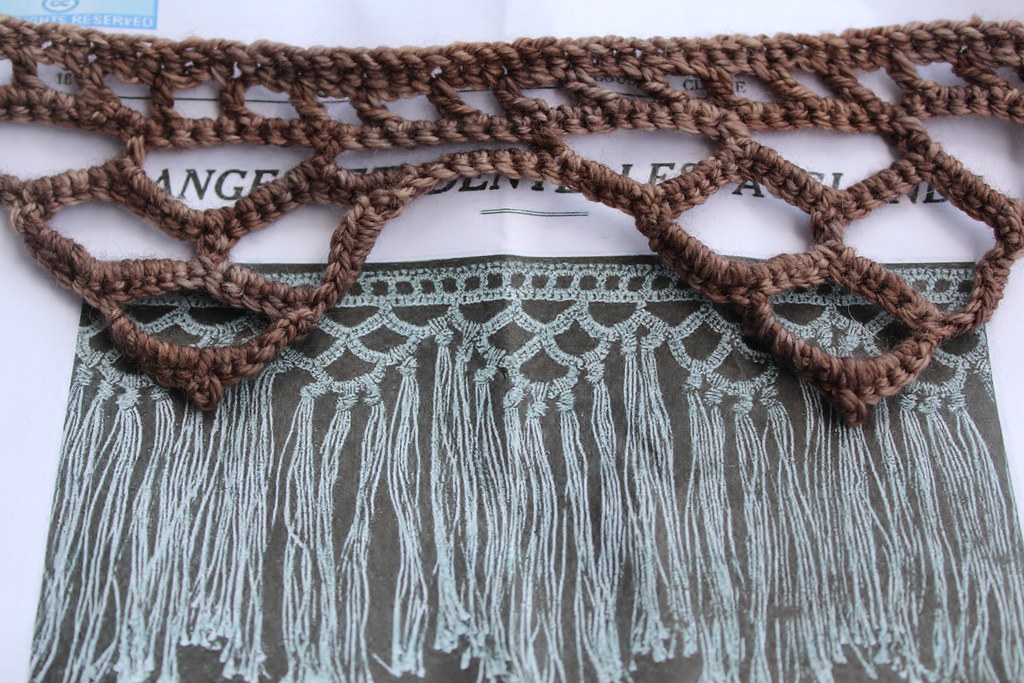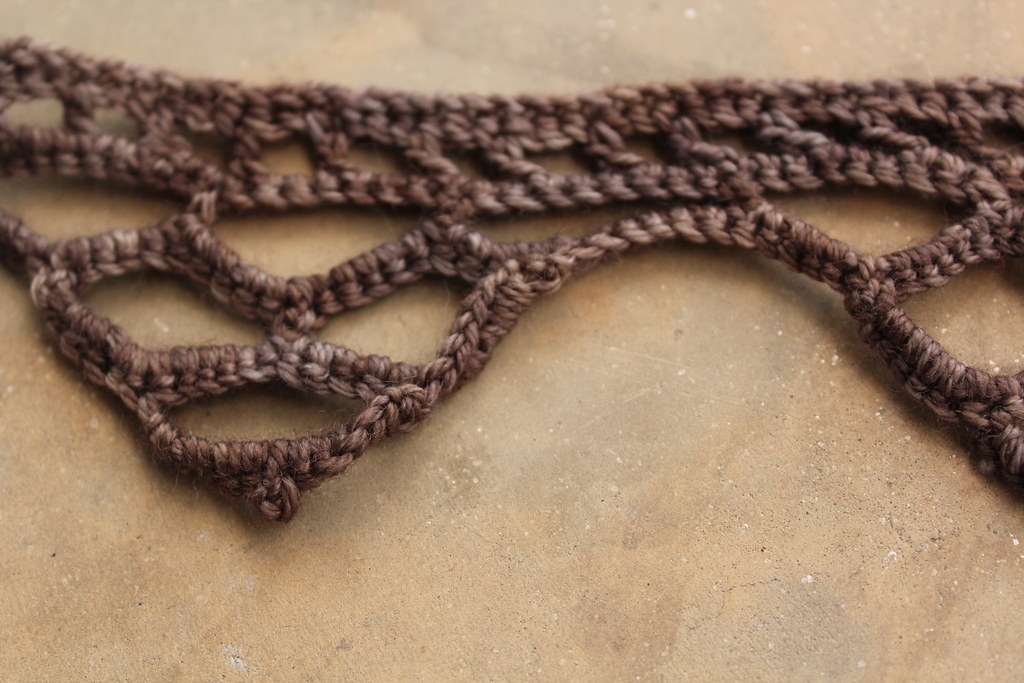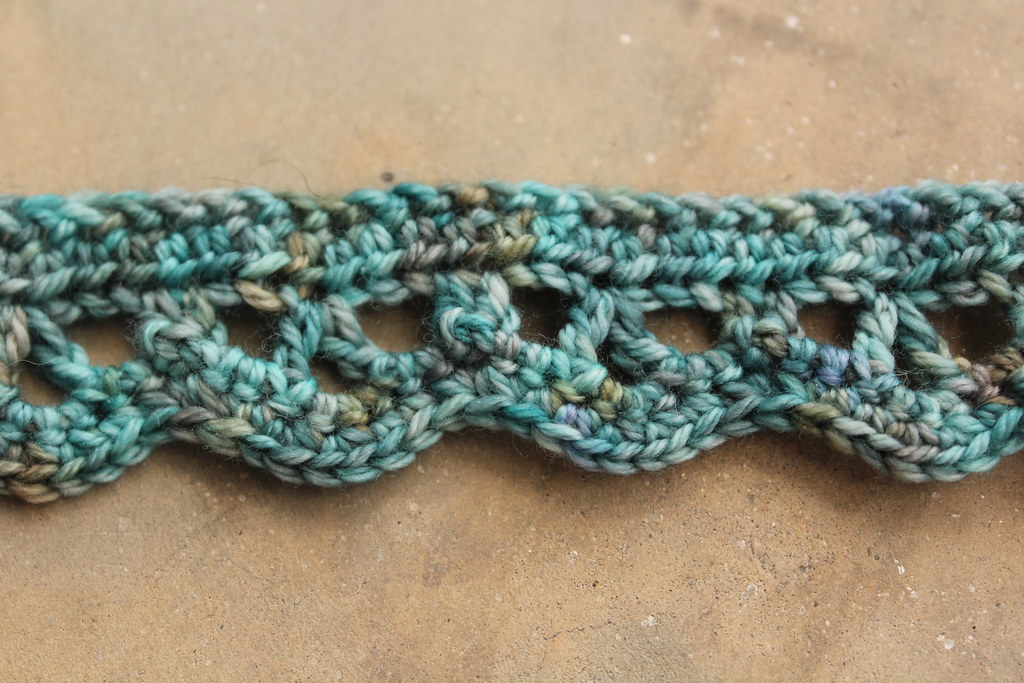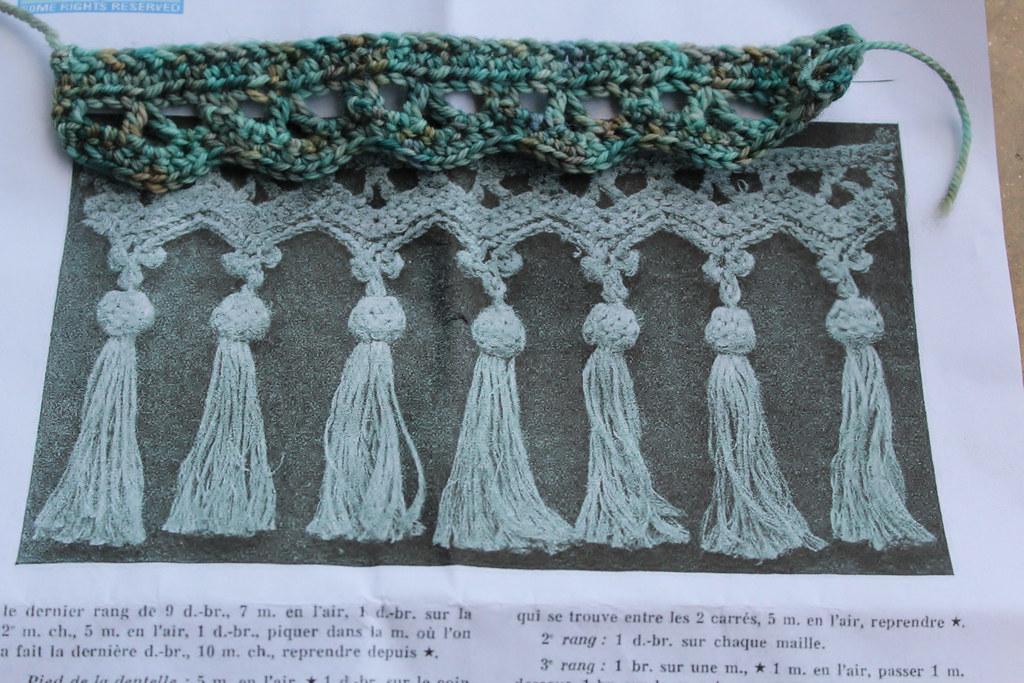This is a post that, in its original form, appeared for Jordana Paige’s blog. The rights reverted back to me, and in light of the publication of Time Traveler
.jpg) |
| Photocredit: Sockupied My Historically inspired socks |
, I thought it was a timely blog post. I’ve made updates and edits to this post, as time has reflected.
One of my favorite things to do when I get a little bit of time
(between teaching crochet and knit, designing, and writing) is to peruse
historical patterns. It’s a fortunate
function of our digital age that the casual crocheters or knitter can, with a
click of their mouse, find a wealth of historical magazines online.
(between teaching crochet and knit, designing, and writing) is to peruse
historical patterns. It’s a fortunate
function of our digital age that the casual crocheters or knitter can, with a
click of their mouse, find a wealth of historical magazines online.
Now, I will not claim that reading historical patterns is
for everyone. For one, half of my
digital collection is in French and German, and it can sometimes be a little
challenging to translate patterns. And
even in English, patterns can trip the casual reader up, using the same name
for different stitches, or using terms that are no longer commonly used.
for everyone. For one, half of my
digital collection is in French and German, and it can sometimes be a little
challenging to translate patterns. And
even in English, patterns can trip the casual reader up, using the same name
for different stitches, or using terms that are no longer commonly used.
There exists a wealth of resources where you can find
historical patterns online. To get you
started, I have listed some of my favorite resources:
historical patterns online. To get you
started, I have listed some of my favorite resources:
http://archive.org/
(search knitting or crochet)
(search knitting or crochet)
If you’re willing to do some digging in other languages, there’s a few other resources I can recommend:
http://gallica.bnf.fr/
(French, search tricoter and crochet)
(French, search tricoter and crochet)
http://www.collectionscanada.gc.ca
(Canadian, search knitting, crochet, or tricoter)
(Canadian, search knitting, crochet, or tricoter)
When you go to any of them, just search “crochet” or
“knitting” or “needlework.” You’ll find
tons of patterns, though unlike modern resources, knitting, crochet and needlework
were not so sharply divided. In the same
magazine you might find a pattern that calls for use of crochet, knitting and
sewing. I think that’s half of the fun.
“knitting” or “needlework.” You’ll find
tons of patterns, though unlike modern resources, knitting, crochet and needlework
were not so sharply divided. In the same
magazine you might find a pattern that calls for use of crochet, knitting and
sewing. I think that’s half of the fun.
If you are willing to squint at some old etchings and
problem solve when things don’t quite go right, it can be a fun way to get a
glimpse of the past. And maybe you’ll find some new patterns to love!
problem solve when things don’t quite go right, it can be a fun way to get a
glimpse of the past. And maybe you’ll find some new patterns to love!
Below, I’ve written out two edgings that I adapted from “Le
Crochet, Album de Travaux de Cousine Claire.”
These come from page 16-18 of the book, in the section titled “Franges
Et Dentelles a Glands.” While the
original patterns served as an influence, I couldn’t help but add my own twist!
Crochet, Album de Travaux de Cousine Claire.”
These come from page 16-18 of the book, in the section titled “Franges
Et Dentelles a Glands.” While the
original patterns served as an influence, I couldn’t help but add my own twist!
Tiers and Hills
Ch 24 +1
 |
| Sample with original pattern. |
Ch 2, sk 1st st, hdc all sts afterward. Turn
Ch 3 (counts as dc), *ch 2, sk 2, dc into next st. Repeat
from * until end. Turn
from * until end. Turn
Ch1, sc into every st. Turn
Ch1, sc into 1st st. ch 8, sk next 7 sts, sc into next st.
Repeat until end. Turn
Repeat until end. Turn
Ch 1, sc 11 times into ch 8 space. Repeat until all ch 8
spaces are worked. Break yarn and turn.
spaces are worked. Break yarn and turn.
Sk 1st 5 sts, join yarn to 6th sc. *Ch 8, sk next 10 sts, sc
in 11th st, repeat from * once more. Turn, * sc 11 sts in ch 8 space, repeat
from * once more. Break yarn and turn.
in 11th st, repeat from * once more. Turn, * sc 11 sts in ch 8 space, repeat
from * once more. Break yarn and turn.
Sk 1st 5 sts, join yarn to 6th sc. Ch 8, sk next 10 sts, sc
in 11th st. Turn, sc 11 sts in ch 8 space. Break yarn and turn.
in 11th st. Turn, sc 11 sts in ch 8 space. Break yarn and turn.
Repeat steps 7 & 8 over next 3 ch bumps. Continue until
entire edging is worked.
entire edging is worked.
Lacy Chevron
Ch 2 (counts as hdc) *hdc in 1st st, ch 2, sk next 2 sts, dc
in next st, ch 2, dc in same st, ch 2, sk next 2 sts, hdc in next st. Repeat
from * until end of row. Turn.
in next st, ch 2, dc in same st, ch 2, sk next 2 sts, hdc in next st. Repeat
from * until end of row. Turn.
Ch 1, *sc in 1st hdc, sc twice in ch 2 sp, sc 4 in next ch 2
sp, sc 2 in next ch 2 sp, sc in hdc. Repeat from * until end of row. Turn.
sp, sc 2 in next ch 2 sp, sc in hdc. Repeat from * until end of row. Turn.
Ch 1, *sc2tog in next 2 sts. Sc in next 2 sts. 2 sc in next
st, 2 sc in next st, sc in next 2 sts, sc2tog. Repeat from * until all sts are
worked.
st, 2 sc in next st, sc in next 2 sts, sc2tog. Repeat from * until all sts are
worked.




